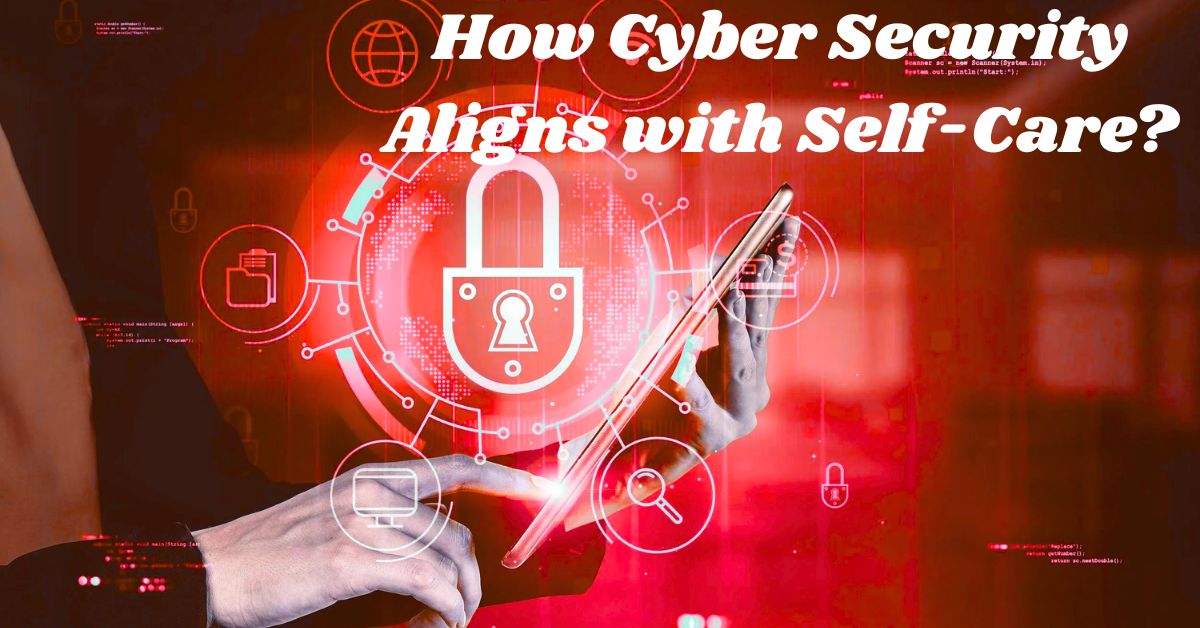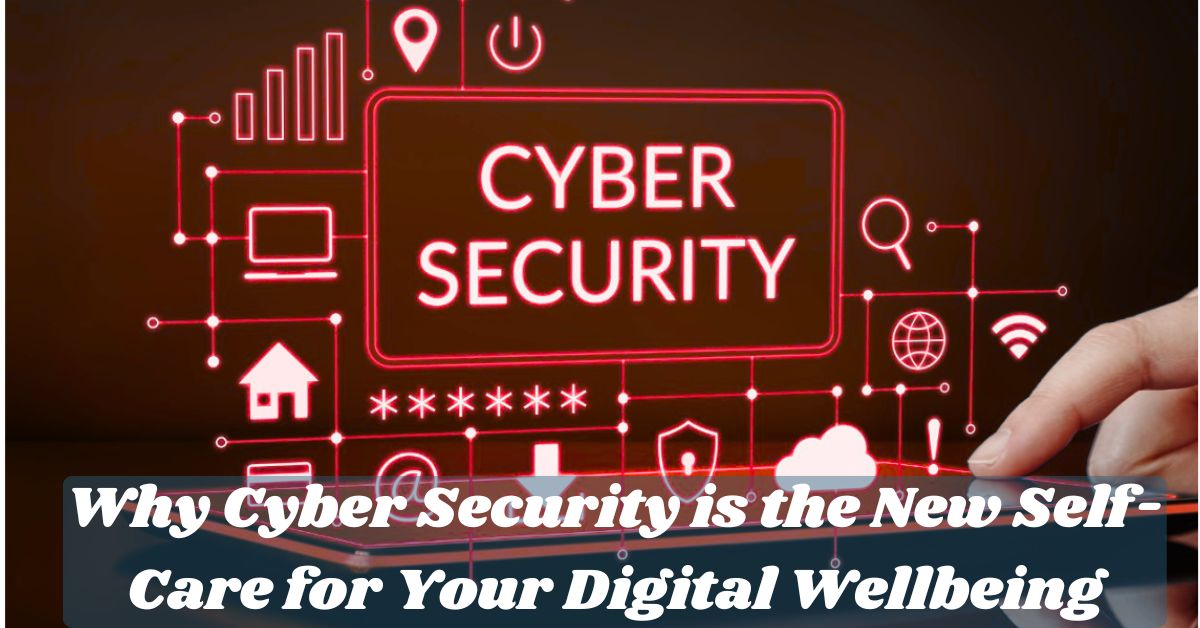Modern life demands a new approach to personal wellness. Traditional self-care focuses on physical and mental health. Today’s reality requires digital wellness practices as essential components of overall well being.
Cyber security trends show increasing threats to personal data. Your digital life needs the same protection as your physical health. Online privacy protection has become as important as locking your front door.
The connection between cybersecurity and self-care runs deeper than surface-level protection. It creates peace of mind in our hyperconnected world.
The Growing Importance of Digital Wellbeing
Digital devices dominate daily routines. Average screen time exceeds eight hours per day for most adults. Our digital footprint management affects real-world consequences.
Data breach prevention protects more than information. It safeguards your reputation, finances, and mental health. Identity theft monitoring prevents life-altering financial disasters.
Modern threats require modern solutions:
- Ransomware protection prevents devastating file loss
- Phishing attack awareness stops financial fraud
- Malware detection systems maintain device performance
- Network vulnerability assessment identifies weak points
Cyber threat intelligence reveals new attack methods daily. Staying informed becomes a wellness practice. Security awareness training builds confidence in digital spaces.
Digital hygiene practices mirror physical cleanliness routines. Regular updates, password changes, and system scans maintain digital health. Online safety protocols create structured protection habits.
How Cyber Security Aligns with Self-Care?

Self-care establishes boundaries, creates safe spaces, and reduces stress. Cybersecurity mirrors these principles perfectly in digital environments.
Pattern recognition systems help identify threatening behaviors online. Contextual understanding allows better decision-making about digital interactions. Sentiment analysis tools can detect suspicious communications.
Machine learning models power modern security solutions. They adapt to new threats automatically. Knowledge extraction from security data improves protection over time.
1. Building Boundaries in the Digital World
Digital boundaries protect personal information and time. Strong boundaries prevent unauthorized access to private accounts and data.
Password security management creates the first line of defense:
- Use unique passwords for each account
- Enable multi-factor authentication everywhere possible
- Update passwords regularly using secure generators
- Store credentials in encrypted password managers
Information security compliance follows established protocols. Cyber resilience strategies prepare for potential breaches. Endpoint security solutions protect all connected devices.
Natural language processing helps identify suspicious emails and messages. Text mining algorithms scan communications for threat indicators. Entity recognition flags unknown senders automatically.
2. Creating a Safe Environment
Safe digital spaces require proactive protection measures. Cloud data protection secures stored information across platforms. Regular security audits identify vulnerabilities before exploitation.
Essential safety tools include:
- Antivirus software with real-time scanning
- Firewall protection blocking unauthorized connections
- VPN services encrypting internet traffic
- Secure browsers with privacy features enabled
Text analytics monitor digital communications for threats. Document analysis verifies file safety before downloading. Content classification separates trusted from suspicious sources.
Linguistic pattern analysis detects social engineering attempts. Semantic similarity identifies copycat phishing sites. Content comprehension tools explain complex security settings.
READ THIS BLOG: What Are Attention Aware Features on iPhone? Explained
3. Reducing Stress with Proactive Measures
Proactive cybersecurity eliminates anxiety about potential threats. Regular maintenance prevents emergency situations. Automated security updates reduce manual oversight requirements.
Stress-reducing practices include:
- Daily security scans for peace of mind
- Backup verification ensuring data safety
- Privacy settings reviews maintaining control
- Software updates closing security gaps
Textual data processing automated threat detection. Language understanding improves user interfaces for security tools. Computational linguistics creates intuitive security prompts.
Cyber Security Tools as Self-Care Essentials
Modern cybersecurity tools function like wellness apps. They provide continuous protection with minimal user intervention. User-friendly interfaces make security accessible to everyone.
Essential security tools mirror self-care products:
- Password managers eliminate memory stress
- Identity monitoring services provide ongoing surveillance
- Secure communication apps protect private conversations
- Privacy browsers maintain browsing confidentiality
Topic modeling helps organize security information effectively. Semantic analysis improves threat intelligence reports. Pattern recognition identifies behavioral anomalies automatically.
Machine learning algorithms adapt to individual usage patterns. They learn normal behavior and flag unusual activity. Contextual understanding reduces false positive alerts.
Cyber Security Habits to Cultivate

Successful digital wellness requires consistent daily habits. Small actions compound into significant protection over time. Habit formation works the same for security as physical fitness.
Daily security habits include:
- Email verification before clicking links
- Software updates when notifications appear
- Password strength checks during account creation
- Privacy settings reviews on social platforms
- Backup confirmations for important files
Knowledge extraction from security incidents improves future decisions. Information extraction tools summarize threat reports quickly. Document analysis verifies software authenticity before installation.
Weekly security maintenance involves:
- System scans for malware detection
- Account reviews for unauthorized access
- Privacy audits of online accounts
- Backup testing for data recovery
- Security tool updates for latest protection
Content comprehension tools explain complex security concepts. Text analytics monitor account activity for suspicious patterns. Linguistic analysis improves security communication clarity.
The Mental Health Benefits of Cyber Security
Strong cybersecurity practices directly improve mental health outcomes. Digital anxiety decreases when protective measures are in place. Control over digital spaces reduces stress levels significantly.
Psychological benefits include:
- Reduced anxiety about data breaches
- Increased confidence in online activities
- Better sleep without security worries
- Improved focus during digital tasks
- Enhanced privacy supporting mental wellness
Sentiment analysis tracks emotional responses to security threats. Pattern recognition identifies stress triggers in digital interactions. Behavioral analysis optimizes security workflows for user comfort.
Digital empowerment comes from security knowledge. Understanding protection methods builds confidence. Self-efficacy increases with security skill development.
ALSO READ THIS BLOG: The Guide to Xossipy: An Overview, Features, and Insights
Frequently Asked Questions
How often should I update my cybersecurity tools?
Daily automatic updates ensure optimal protection against emerging threats.
What’s the most important cybersecurity habit for beginners?
Strong unique passwords with multi-factor authentication provide essential baseline security.
Can cybersecurity practices really reduce stress?
Proactive security measures eliminate uncertainty and anxiety about potential threats.
How much time should I spend on digital security daily?
Five minutes daily for basic maintenance prevents hours of recovery time later.
Which cybersecurity tool provides the best mental health benefits?
Password managers eliminate memory stress while significantly improving account security.
Conclusion
Cybersecurity as self-care represents a paradigm shift in personal wellness. Digital wellbeing requires the same intentional care as physical health.
Modern life demands integrated security practices. Daily habits, protective tools, and ongoing education create comprehensive digital wellness. Mental health benefits extend far beyond data protection.
Embrace cybersecurity as an essential wellness practice. Your future self will appreciate the peace of mind and security these habits provide. Digital wellness starts with single daily action toward better security.

Jerry is a seasoned SEO expert with a passion for content writing, keyword research, and web development. He combines technical expertise with creative strategies to deliver exceptional digital solutions.










